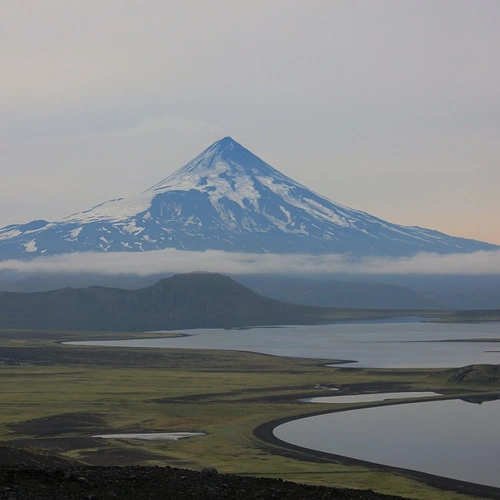
A view over Fisher Caldera in the foreground, looking out to Shishaldin Volcano, at a distance in 2015. The gray and gloomy tone of the photo is characteristic of the weather in the Aleutian Island. Photo is courtesy of Daniel Rasmussen of the National Museum of Natural History. Photo taken under Alaska Maritime National Wildlife Refuge Research and Monitoring Special Use Permit #74500-15-011.